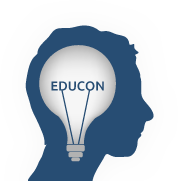Broadening STEM, Intertwining the Arts with the STEM Disciplines
Traditional STEM education emphasizes reductive thinking and disciplinary depth but does not necessarily incorporate pedagogy of creativity and collaboration. Designers, choreographers, filmmakers, musicians etc. understand that creativity is a process and a shared artistic vision is quintessentially a collaborative effort. This topic aims to shed light on the idea that the traditionally narrow focus of the STEM fields can be expanded and enhanced with collaboration from the arts.
Broadening this idea, it is important not to think of the STEM fields as uniquely separate; engineering is not removed from science and math; in fact, they are intricately intertwined. Using this as a baseline, the arts are not a separate discipline either. Music technology is a mainstream example of how engineering is seamlessly integrated into a traditional ‘art’ field. Smart textiles or wearable technology, fabric with electronic components, is another example of how ‘fashion’ can combine with science. These are just two examples. The goal of this conversation is not simply about adding the art discipline to STEM but is about emphasizing that all disciplines overlap, including the arts, and that comprehensive thinking is essential for education in all fields.
Conversational Practice
After a brief lecture and introduction to the topic, small group discussions will ensue. Educators will be separated into groups based, not on the subject that they teach, but instead on the age level that they teach (elementary, middle, or high school), and will be encouraged to share their ideals in a round-table type discussion, brainstorming how they envision adding artistic, creative, or more visual elements into STEM fields to broaden innovation and learning. The small group discussions will not be highly structured but will hopefully produce creative thinking about how the art can intersect with science, technology, engineering and mathematics and may help educators develop lesson plans. The group will come together and will create one large list of their ideas, suggestions, reflections etcetera.
A wiki page will be created so that participants can share their ideas after the conference has concluded and share resources that they may have developed during the session.
Conversation Links
-
Ashley JohnsonThe Madeira School
-
Alex NorthrupFoxcroft School
-
Casey Reed
-
Sue Hellman
-
Misty OvermanGreater Atlanta Christian School
-
Zoe DuskinInspired Teaching School
-
Kathryn DonahueIndependent Consultant
-
Mike ThayerSummit Public Schools
-
Tacey MillerNC State University
-
Emily Graves
-
Jacob SamuelsonKuato Studios / Wharton
-
Aliza GreenbergMetropolitan Opera Guild
-
Colin AngevineFriends' Central School
-
Nancy WhiteAcademy District 20
-
Alistar Erickson-LudwigDrexel University
-
Jaymes DecMarymount School
-
Margo Jantzi
-
Marc SeigelMiddletown HS South
-
Vinnie VrotnyKinkaid School
-
Brian GannonSouth Milwaukee School District
-
Katrina StevensUS Department of Education
-
Jeff PiontekHawaii Stream Academy
-
Kevin Jarrett
-
jen Gleason
-
Mark SvendsenCentral Catholic High School
-
Elizabeth Clarke
-
Jim DohertyWyoming Seminary School
-
Tracy RudzitisThe Computer School MS 245 NYC
-
elizabeth helfant
-
Sydney MusslewhiteLubbock-Cooper ISD
-
Diana PottsEthical Culture Fieldston School, Fieldston Lower
-
Robin LongThe Harley School
-
JP ConnollySaint Ann's School
-
Megan HowardThe Walker School
-
Joseph HelpernFriends Academy
-
Maryann MolishusCouncil Rock SD
-
Rebecca SchmidtInspired Teaching School
-
Jane Kauer
-
Tina GiannopoulosWRDSB
-
Monica Amadio
-
Kyle WebbMICDS (and Canada)
 EduCon 2.5
EduCon 2.5
No comments have been posted yet.
Log in to post a comment.